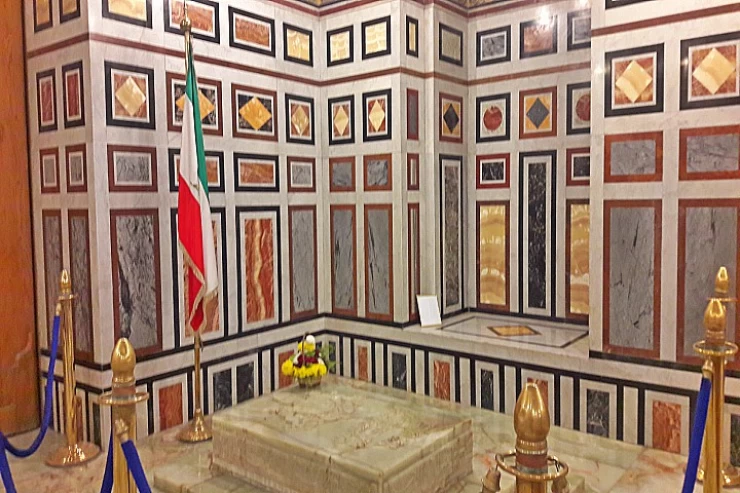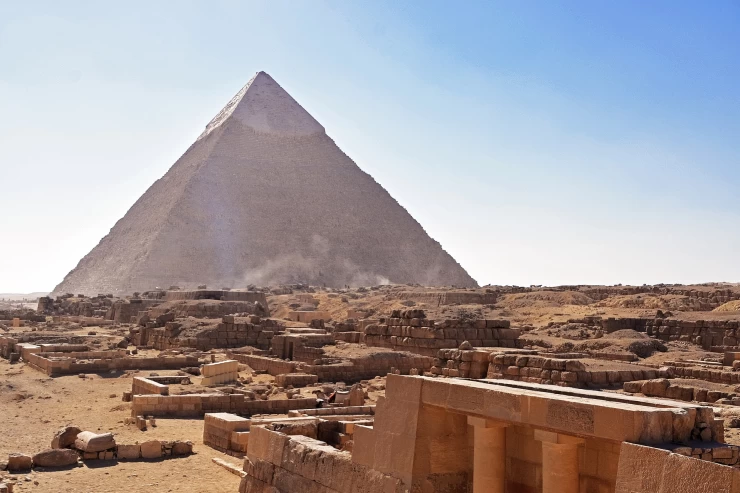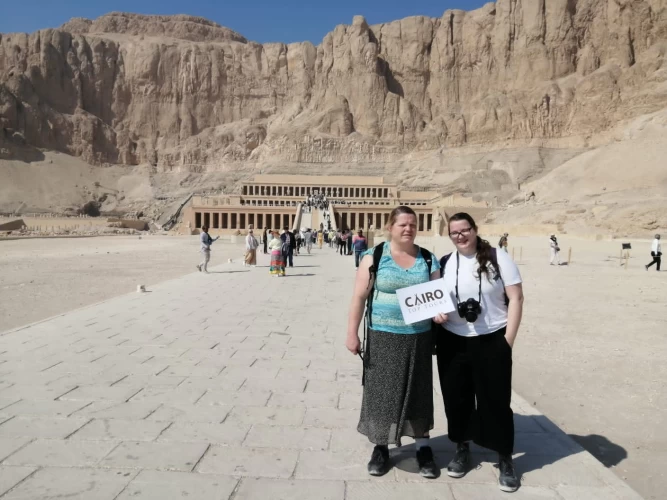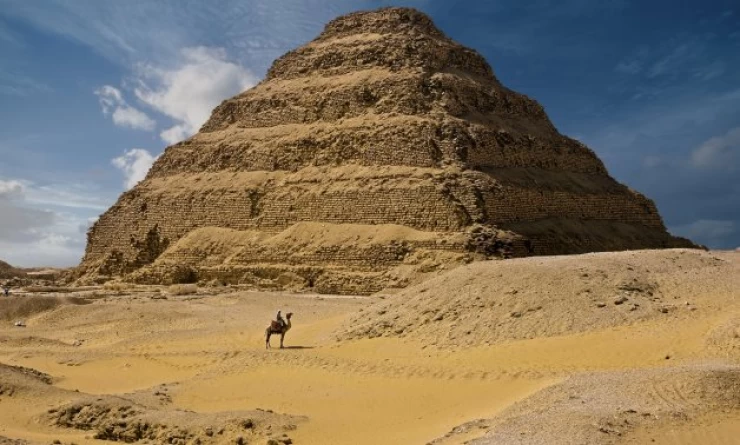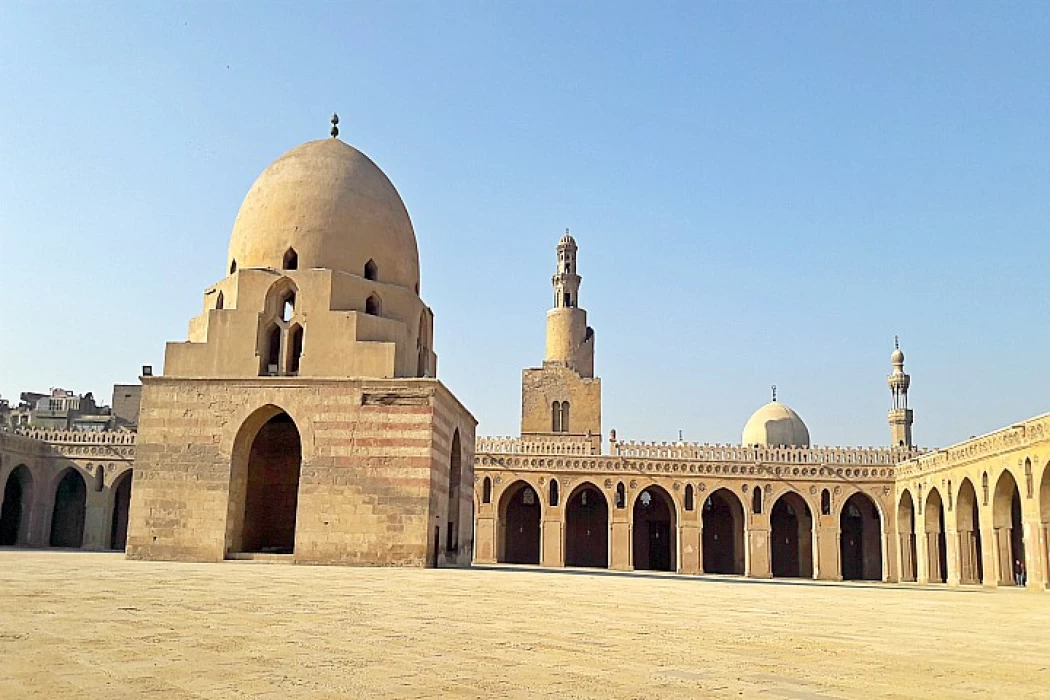
Muslim Conquest in Egypt | The Arab Conquest of Egypt
Muslim Conquest in Egypt
During the reign of the second rightly guided Caliph Umar ibn al-Khattab, the Arab Muslim leader, Amr ibn al-As, conquered Egypt to become part of the Islamic Caliphate. The Islamic conquest of Egypt after Muslims conquered Palestine from the hands of the Romans in order to secure both conquests, the caliph Umar ibn Al-Khattab didn't allow the Islamic armies to proceed in Africa.
Through our Egypt Luxury tours, you will explore the history of Egypt and how Islam entered Egypt. The leader Amr ibn al-As was fond of Egypt before adopting the Islamic faith, and after he defeated the Romans in the Battle of Ajnadeen, the caliph asked for permission to enter Egypt, which the caliph initially refused.
Soon after, Amr bin Al-Aas agreed and sent him supplies. Amr bin Al-Aas went to his army. Proceeding towards Egypt via the military land road, he passed by Sinai through Al-Arish and Al-Farma, then besieged and captured Babylon Castle, and Egypt was ruled at that time. However, it is well worth taking the time to explore all Egypt travel packages.
It can be said that the Islamic conquest of Egypt was in the eighteenth year of migration, which is the year corresponding to the year 640 A.D. during the caliphate of Umar ibn al-Khattab, may Allah be pleased with him, and the leader of the conquerors was the shrewd Arab companion Amr ibn al-As, may Allah be pleased with him, and he took the path to the Mediterranean coast; he reached Al-Arish and conquered it without any significant resistance, and when he reached the village of Al-Faramah at the beginning of the Egyptian border, the Islamic Army faced a Roman-Byzantine garrison and besieged it for a long time until it fell in 19 to migrate. The first beneficiaries of the Islamic conquest are the Copts in Egypt. They helped the Muslims in Egypt to open a lot. Muslims continued to crawl down to Alexandria, Vhasroha for four months, and then forcibly Fd Amr Ibn al-Her family left the people of Edema and fell Muqawqis at the head of his people in exchange for tribute, and this was the year 20 A.H.
The Arab Conquest of Egypt
Some historians state that one of the main reasons for the success of the Islamic armies in defeating the Byzantines was the reception of Egyptian Christians to the Arabs as their saviors from the torture of the Romans. A supporter of this view is British historian Edward Gibbon in his book “History of the Fall of the Roman Empire” in 1782.
The other group of historians believes that the Egyptians resisted the Arabs and fought alongside the Byzantines. Among those who support this view are the Egyptian historian Taqi al-Din al-Maqrizi and the British historian Alfred Butler.
The flowering of Islamic architecture is evident in the city of Al-Qata’ea and the Mosque of Ahmed Ibn Tulun, which was built on the approach of the Mosque of Amr Ibn Al-Aas with the addition of a fountain, minaret, pillars, decoration, and founding plate.
The Ayyubid era was also marked by the progress of architecture, and one of its most famous features is the construction of the Salah al-Din Citadel. This castle represents Islamic architecture from the Ayyubid state until the era of Muhammad Ali.
The most magnificent outdoor museum of Islamic art is called El-Moez Street. It was the main street throughout the city when it had been built during the 11th century, and mosques, Madrasas or schools, Sabils, mausoleums, and palaces were built here. The northerly part of the street (between Bab El-Fotouh and Al-Azhar Street) was newly renovated. This is one of the most graphic parts of Cairo. The Qalawun Complex here is one of the most prominent in Cairo.
Establishment of the Islamic Caliphate in Egypt
Amr ibn al-As initiated the Islamic administration of Egypt as soon as he managed to rout the last of the Byzantine holdouts. Setting near present-day Cairo the city of Fustat for the purpose of being the new capital of Egypt under Islamic rule, the city soon flourished into an amalgam of commercialism, with a marketplace, mosques, and administrative buildings. These would all one day pave the way for Cairo, which was to become a leading center of Islamic civilization in the region.
The introduction of Islamic rule brought substantial changes to the social and economic landscape of Egypt. Several were familiar with Arab traders and sympathies towards their cause; nonetheless, the growth of Islam dramatically altered the other religious dimension in Egypt. Over time, many Egyptians were converted to Islam, though Christians remained numerous, especially in the southern part of Egypt. The Coptic Christian community that had existed in Egypt was able to flourish under Islamic rule.
The Influence on Egyptian Society and Culture
Egypt came under Arab occupation, politically taking over, a thorough cultural overlay. The introduction of Islam changed language, architecture, and much more, merging Egypt's ancient historical traditions with this new Islamic culture.
The spread of Islam meant that Arabic gradually, with time, became the major tongue of Egypt, taking the place of Greek and Coptic as the preferential channel of communication. Arabic was felt in Egypt much beyond the social life sphere and into administration, education, and literature.
Islamic Architecture: The Arab conquest was the onset of a new dawn in the architectural development of Egypt. Mosques and Islamic structures were constructed, providing the genesis of the unique Islamic architectural style that would later dominate the region. The prestigious Azhar mosque in Cairo, among the oldest standing institutions of higher learning in the Muslim world, was founded around this period.
Religious Changes: While many Egyptians resisted converting to Islam, the gradual diffusion of the faith engendered new religious and cultural practices. The influence of Islam profoundly shaped many aspects of Egyptian life, including changes in societal norms, law, and everyday activities. At the same time, the indigenous Coptic Church continued to hold a prominent place in Egyptian society.
Parting Reverberations of the Conquest
The Muslim conquest of Egypt opened a fresh and new chapter in the long and storied history of the nation. This was to usher in a period of Islamic rule that would extend for centuries, with Egypt taking a pivotal position within the wider Islamic world. Fatimids, Mamluks, and Ottomans would later rule over Egypt, each providing unique contributions to culture and society.
The Arab conquest also helped Egypt to be among the intellectual and cultural capitals of the Islamic world, especially during the Golden Age of Islam in the medieval period. Egypt's prosperous cities, with Cairo at the helm, became centers of learning, trade, and culture, fueling the wider area of the Arab world.
Today, the legacy of the Muslim conquest of Egypt is evident in the country in terms of religious, cultural, and other allied monuments. Islam remains the chief religion, while nearly all Egyptians converse in the Arabic language. This momentous event continues to play a lasting role in determining Egypt's identity in the present day.
Conclusion
The Muslim conquest of Egypt was a far-reaching development that changed the course of history for that nation. Through military might, diplomacy, and cultural equation, Amr Ibn Al-As conquered Egypt and laid the foundations of a new civilization that has colored the history of the region for centuries. The Arab presence in Egypt marked the beginning of an era of Islamic dominance that continues to be a hallmark of the country to this day.







